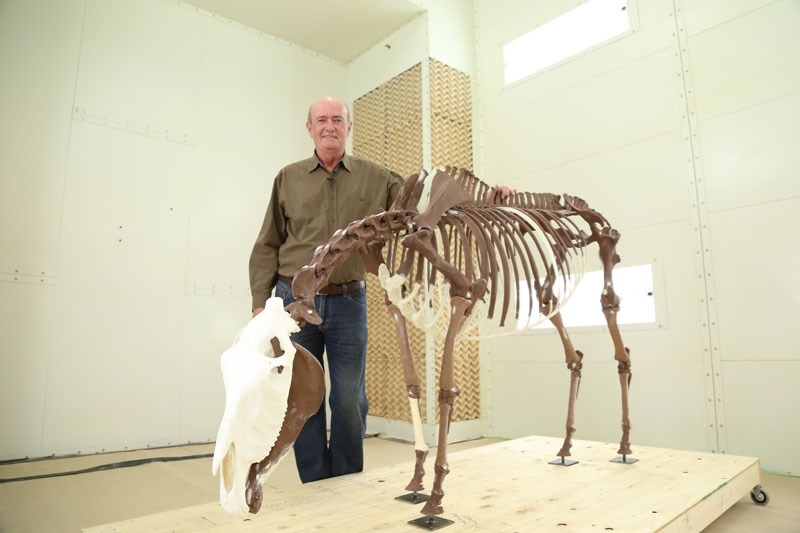Imagine going back in time 25,000 years ago, what do you think you would see?
“You’d think you’re in the middle of the Serengeti Plains,” said Peter Milot, paleontology exhibition specialist at the Royal Alberta Museum. “You would’ve seen mammals, mastodons, lions, and camels. It was just like Africa in many ways.”
Horses, however, would make up a majority of the mammals around you. “Alberta was horse heaven,” Milot said. He estimated that horses made up around 90 per cent of the animal population in Alberta.
The Edmonton Ice Age gallery, planned to open with the new Royal Alberta Museum in early 2018, will feature two skeletal mounts of these native Alberta horses.
These casts are made from a polyurethane resin that Milot creates and shapes overtop a metal armature.
“My job is to hide it,” Milot said, “so that you’re looking at the skeleton and not a lot of metal.”
Milot appreciates working with casts as it leads to the creation of a complete specimen.
“If something happens when you’re working with an original fossil, it’s gone forever.”
With heat, Milot is able to recast certain parts of the specimen, enabling him to ensure an accurate portrayal without the danger of losing an irreplaceable piece. Once completed, they are painted with oil paint to complete the fossil look.
Chris Robinson, executive director of the Royal Alberta Museum, said that the opening of the new museum in downtown Edmonton will lead to “more stories, more space, and more stuff.”
The museum has been holding onto pieces for years, with no room to display them. The new museum, which will be the largest in Western Canada, will have close to 400 individual exhibits with 5,300 objects on display.
“They will be the centrepiece of the exhibit,” Milot said of the skeletal horses, which have been in the making for six years. “In some of the other exhibits we show animals interacting more aggressively with each other, but this is sort of an island of tranquility.” Equus Conversidens, the horse species featured at the gallery, was a medium-sized horse that was found throughout North America during the time of the last ice age. Milot compared them to many of the horses found in Asia today. The inclusion of the two horses was meant to signify the significant presence that these animals had in Alberta.
The exhibit will feature eight different casts, including a mammoth, a mastodon, an American lion, and more.
“I can’t wait for the museum to open,” Milot said of the new Royal Alberta Museum. “In my humble opinion I think that this Ice Age gallery is going to be one of the finest, if not the finest gallery in North America.”




